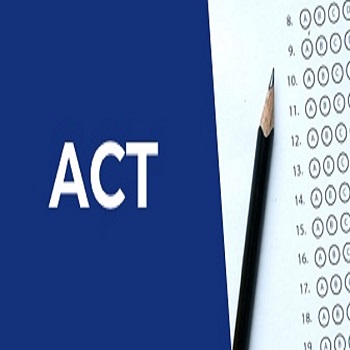Most of the High School juniors might have taken the March 2023 SAT. If you did well in the exam and expected your target score that’s a positive indication that you are confident and comfortable with the SAT exam. But if you did not do well and plan to get back to ACT testing and take the upcoming ACT test in April 2023. Socrato shares some test prep secrets or tips which when applied during test prep will definitely help you to achieve your targeted score. All you need is ACT’s “Official ACT Prep Guide”. This book has 4 to 5 actual ACT tests that have been released.
Here are steps to ace the test:
- Check your college’s list of expected ACT score ranges.
- Accordingly set your target score.
- From the “Official ACT Prep Guide”, take the full 3-hour test.
- You can grade the test manually or with online tools like Scorato
- Also, you can access diagnostics for tests like ACT online.
- Also, check your score.
- Calculate the difference between your target score and the score achieved in the test.
- Based on your score, list your strong and weak subjects
- Identify areas where you can improve the score by performing a topic analysis.
- Practice related questions or section tests related to those topics.
- It is recommended that you retake the full test in a couple of weeks.
- Compare the score.
- Repeat the exercise until you achieve the target score.
Let’s go through a real example.
- Assuming a student has taken a full test. In the below case, the student’s targeted score is 34. After taking the full test student achieves 32.
- Calculate the difference between the targeted score and the achieved score. The difference between 34 and 32 is 2, which means 2 more scale points are needed to achieve your goal.
- Identify the stronger subject: You can see in figure 2 that students subject-wise scaled score 31 in English, 32 in Math, 30 in Reading, and 33 in Science. It can be seen from the scale scores that math and science are stronger than the other subjects. The results indicate that math and science are students’ natural strengths.
- The number of correct questions in English is 67, math is 54, reading is 33, and science is 37, as shown in figure 3. As a result, the scaled scores for English, Math, Reading, and Science are 31, 32, 30, and 33, respectively. This will result in a composite score of 31.5 based on the average of the scaled scores i.e., (31+32+30+33)/4 = 31.5, which is round-off by 32.
- Now, the student needs to correct approximately 10 more questions to increase to 2 points in order to get a target composite scaled score of 34.
- In English, if a student answers 71 questions correctly instead of 67, the student will get 4 points. In Math, if a student answers 58 questions correctly instead of 54, the student will get 4 points. In Science, if a student answers 39 questions correctly instead of 37, the student will get 2 points. In this way, 10 points the student will increase.
- As a result, the scaled score in English would increase from 31 to 34 by getting 71 questions correct. In the same way, the scaled score in Math would increase from 32 to 35 by getting 71 questions correct and the scaled score in Science would increase from 33 to 35 by getting 71 questions correct. As a result, the scaled score will now be 34 i.e., (34+35+30+35)/4 = 33.5, which is round-off by 34.
- Now let’s take a look at which topics students need to study to answer 4 questions correctly in English. As shown in below figure 4, there are 32 questions in USAGE/MECHANICS, and students correct 28 questions out of 32. A total of 14 questions pertaining to punctuation within USAGE/MECHANICS. The student corrects 10 out of 14 punctuation questions, which indicates that this topic is not a strength since it requires a lot of effort.
- Next, as shown in below figure 4, there are 35 questions in RHETORICAL SKILLS, and students correct 31 questions out of 35. A total of 19 questions pertaining to the content topic within RHETORICAL SKILLS. The student corrects 18 out of 19 content questions, which indicates that this topic is a strength of the student and it requires less effort.
According to the above topics and topic analysis, students should also prioritize their preparation in accordance with figure 5.
Download ACT’s free e-book to learn more about the ACT. For a comprehensive diagnostic report, students can also grade ACT practice test bubble sheets online using Socrato’s test grading software.















